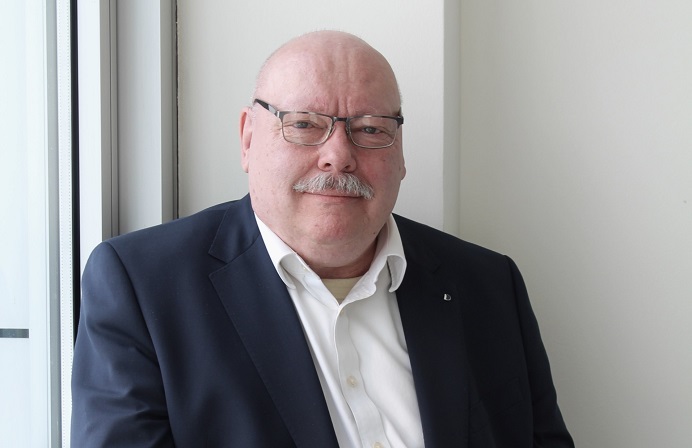
FST Media: What is Reinventure?
Cant: Reinventure comes out of the background that Danny, my partner, and I had working in corporations, particularly in media, helping them try and tackle disruption, digital disruption, internet disruption. And our experience was that internal innovation was challenging.
We also saw companies that were taking another strategy, apart from internal re-invention, which was this corporate venturing strategy, but we saw that operating in dysfunctional ways in a lot of the cases. This was our attempt to try and create a model for corporate venture capital which was high-functioning and dealt with some of what we regarded as the biggest challenges for corporate venture capital.
In particular, some of the key challenges; the first is that corporations that are trying to deal with disruption need to be looking forward to the five to seven year horizon. For most corporations, that is outside of their strategic planning window. As a result when corporations are doing corporate venture capital, usually they are looking at things that can help their strategy in the next one to three years, and that can be dysfunctional because inevitably they filter out the ventures that are actually going to be the important ones to be part of in the five to seven year time horizon.
The second issue is that when corporate venture capital is done in a close range for a corporation, it is very tempting for companies to want to take control, and often take control too early. It is usually a full acquisition with some kind of an out, and the story you see is the same again and again, which is the entrepreneur leaves, usually slightly earlier than they were planning to leave under the [earn-out] because they get too frustrated trying to achieve things within a corporation, and the start-up value suddenly crumbles once the entrepreneur has left.
There are couple of key aspects to Reinventure’s model; the first is that we think the corporate venturing function needs to be independent of the corporate strategy function. With Reinventure, we are established as an independent venture capital company under the ESVCLP under the Venture Capital Act. Westpac is a limited partner, so it is an investor in our fund. It is the major investor in our fund and that creates a level of separation that works both for us to be able attract the best entrepreneurs because they can see that they are not necessarily just going to be owned by Westpac from day one. It also is a real advantage for Westpac because they sit at arms’ length and allow us to invest in things which, at a corporate level, they may not want to take ownership of immediately.
Westpac still wants to be able to learn in the near term from these start-ups as well, and where that comes in, is our key value proposition to entrepreneurs, apart from money, which is a standard thing that every VC has, is that for the best entrepreneurs if we can bring Westpac capability to the table, then we can help them to accelerate the growth of their venture.
To be able to bring that Westpac value means that we need to be delivering value back into Westpac. We do that by building relationships, by sharing learning from the ventures with Westpac and vice-versa. We see our role as being the business development arm for our ventures into Westpac.
That is how we have tried to structure the fund, and it is a new model of corporate venture capital, but the early signs are that it is working the way that we had intended. It is building a really strong relationship between SocietyOne and Westpac at a variety of levels, but not in a way that in any way hampers SocietyOne’s growth.
FST Media: Why did you decide to fund SocietyOne?
Cant: SocietyOne fits our investment theory and our investment mandate perfectly. We are focussed on finding businesses that can be substantial and will generate venture capital type returns by being the number one in Australia. That is quite a big differentiator from a lot of the venture capital money in this market. We are looking for what we call inherently regional businesses.
We are looking to work with proven entrepreneurs, the best entrepreneurs that we can find. We also believe that if we can bring genuine value-add from Westpac then we can attract the best entrepreneurs. We tested this prior to setting up the fund and we feel very fortunate to have been able to work with Matt Simons and Greg Simons who are both proven entrepreneurs, they have both had prior exits.
We also look for proven models. Models that have real traction. Peer-to-peer lending is a model that is being proved in a variety of forms, both in Europe and the UK in particular, and also in the US. It was a model that had not really gotten any real attention in Australia, so the fact that it was a proven model overseas, there was a big opportunity in Australia.
The final thing is something to which Westpac can bring significant advantage and there is a bunch of areas where Westpac can bring substantial advantage to a lending business like SocietyOne. Those four criteria meant that SocietyOne; inherently regional, proven entrepreneur, proven model, something to which Westpac can bring a significant advantage, made it a natural first investment for us.
FST Media: What differentiates SocietyOne from other potential competitors?
Cant: It is definitely the entrepreneurs. They were the leading player in the market. Also, their platform which is some very deep IP that enables them to offer a range of peer-to-peer lending products much broader than we are seeing in any of the other peer-to-peer lenders globally. Most of the peer-to-peer lenders globally are relying on third party technology in order to be able to deliver the full lending value chain, whereas SocietyOne have this clear match product which had more than a billion dollars’ worth of loans already put through it over a 10 plus year history, it is been supported and continually developed by a technical team that has been together, some of them for more than 14 years.
This piece of technology is a real differentiator for SocietyOne and is only going to continue to add to its ability to maintain a really strong lean in the market.
FST Media: How do you hope to grown Reinventure and make a return on investments and start-up such as SocietyOne?
Cant: Obviously picking the right investments is key, but we see ourselves as the business development arm for our ventures, so the extent to which we can unlock real value within Westpac is going to be the extent to which we can really make these ventures successful above and beyond our ability to pick a winner. That is where we put a lot of our energy into really building that relationship with Westpac. Westpac like it, the ventures like it so it works well for everybody.
FST Media: What role will peer-to-peer lending play in the future of banking?
Cant: I think peer-to-peer lending has quite a transformative role to play. There is the thing of what we call mispriced risk, so the fact that people are probably paying too much for their loans, because some markets are possibly less competitive than ideally they would be. Particularly in some pockets of the market, more niche pockets, people are being charged egregious interest rates. Hopefully we can bring some more competitive pricing into every layer of the market and that is what we see peer-to-peer lending doing longer term.
The second thing is that it will open up lending to people who previously did not have access to loan funds. Clearly there is a need – and this is something that every government is looking at – which is how do we make business lending more accessible particularly to newer, small/medium size businesses? I think peer-to-peer lending has a huge part to play in that.
The third thing is for investors. Peer-to-peer lending essentially gives individual investors access to what were previously wholesale returns for fixed interest incomes. Previously individual investors did not have access to this. People come through a venture like SocietyOne will be able to get over 8 per cent returns where, if they had it in a bank it might be sitting at sub 4 per cent on a term deposit, so it is a very attractive proposition to investors and I think very disruptive in that regard as well.
FST Media: How big do you think the market for peer-to-peer lending will get in Australia?
Cant: I would not like to put a stake in the ground on how big anything could get because disruptive markets are inherently difficult to predict. The reason is that disruptive products, because they open up markets, for example, it is making lending available to people who previously might never have had the ability to borrow, you actually never know how large that is going to grow because it opens up the base of the pyramid.
It has the potential to grow large, but how large, I would not be able to hesitate a guess. However, we think it is large enough to generate an attractive venture capital type return from an investment in SocietyOne, we are absolutely comfortable that they should be able to achieve that.
FST Media: Will we see more investment in start-ups like SocietyOne from Reinventure and what opportunities are you looking for in future investments?
Cant: Yes, it is a 50 million dollar fund and our plan is that we will probably make quite a reasonable number of sub $1 million investments and then a smaller number of what we would call series A, which will be up to 6 million and they will generally be following into those that we have made seed stage investments in, into the ones that are actually proving to be successful.
We would hope to generate a portfolio of anywhere between six and 12 significant ventures and the typical venture capital statistics are that you would hope that two to three of them would be really significant winners that will generate great returns for the fund.
We are looking in spaces that are both disruptive to financial services, but also spaces that are adjacent to financial services. However, there needs to be a link whereby what would really make sense for Westpac to add value to the firm through some aspect of its capability and that that will really change the trajectory for that firm to make sure it is the winner in its market.
For the right entrepreneur we would look to co-invest from the start-up, but in those cases, we are usually looking to co-invest with an entrepreneur who has their own money as well. We are looking for models that have real demonstrated traction, either here or overseas and we are looking for things that, if they win in Australia, that will generate the level of return that is significant to generate a venture style return for the fund.





